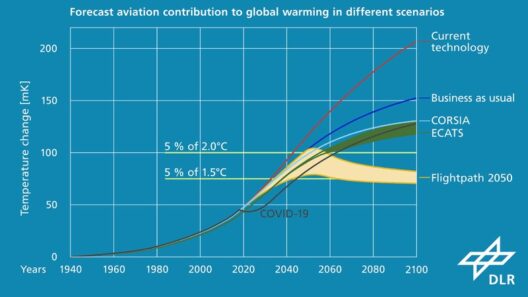In today’s world, vehicles are ubiquitous; they are a central aspect of our daily lives. Have you ever paused to ponder the journey of the emissions exuded by these vehicles? From the asphalt of congested roads to the expansive atmosphere, car exhaust is an insidious contributor to global warming. This article delves into the profound impact of car exhaust emissions on climate change, illuminating the intricate interplay between human activity and environmental degradation.
First, let’s dissect the primary constituents of car exhaust. The combustion of gasoline or diesel in internal combustion engines generates a concoction of pollutants, including carbon dioxide (CO₂), nitrogen oxides (NOx), hydrocarbons (HC), and particulate matter (PM). Among these, CO₂ stands out as a significant greenhouse gas. Its elevated concentration in the atmosphere enhances the greenhouse effect, whereby heat is trapped, leading to a gradual increase in global temperatures.
Historically, the automotive industry has seen a dramatic increase in vehicle production. The convenience and mobility offered by cars have driven global demand; however, this surge comes at a cost. According to the International Energy Agency, road transport accounts for nearly 24% of global CO₂ emissions from fuel combustion. This statistic begs an essential question: as we continue to prioritize convenience over sustainability, are we inadvertently driving ourselves towards a climate catastrophe?
One of the most alarming facets of car emissions is their role in the formation of smog and air pollution. The nitrogen oxides released during fuel combustion react with volatile organic compounds in the presence of sunlight to produce ground-level ozone, a harmful pollutant. This phenomenon has dire implications for human health, including respiratory issues and cardiovascular diseases. Moreover, the environmental ramifications cannot be overlooked—smog covers urban areas, stifling vegetation and disrupting ecosystems.
In addition to direct emissions, the development of infrastructure to support an ever-expanding automotive industry has a cascading effect on land use and biodiversity. Urban sprawl, characterized by the proliferation of roads and parking lots, encroaches on natural habitats, resulting in habitat fragmentation and a decline in biodiversity. The question then arises: are we prioritizing our convenience while sacrificing critical ecosystems that contribute to the very balance of our planet?
As cars traverse roads, they also contribute to the phenomenon known as “urban heat islands.” In many cities, asphalt and concrete absorb and retain heat, causing localized temperature increases. This effect is exacerbated by vehicle emissions. Not only does this contribute to a rise in urban temperatures, but it also increases the energy needed for cooling, thereby perpetuating a vicious cycle of energy consumption and emissions. This interaction poses a critical challenge: how do we transition our urban landscapes into sustainable environments devoid of harmful heat islands?
In tackling the implications of car exhaust, it is imperative to consider potential solutions. Transitioning to electric vehicles (EVs) represents one of the most promising avenues for mitigating emissions. As technology evolves, EVs become increasingly efficient, producing zero tailpipe emissions. However, it is vital to recognize that the electricity powering these vehicles must also come from renewable sources to achieve a truly sustainable solution.
Moreover, public transportation systems present another alternative. By investing in efficient, reliable public transit options, cities can reduce reliance on personal vehicles. A robust public transportation network not only alleviates congestion but also lessens emissions significantly, making it a viable alternative to the combustion engine dominance that currently persists.
How can we encourage consumers to embrace these alternatives? One potential approach is through government initiatives that promote incentives for electric vehicle purchases, or subsidies for public transport users. Education plays a crucial role as well; awareness campaigns can enlighten the public about the environmental consequences of car emissions, encouraging more sustainable travel choices.
Furthermore, the integration of green technologies in urban planning is critical. Implementing cycle lanes, pedestrian paths, and car-free zones can foster a culture of sustainable transport. This not only enhances the urban experience but also encourages a lifestyle that reduces carbon footprints. The challenge remains: how do urban planners and policymakers balance growth with sustainability?
The debate surrounding car exhaust emissions and their impact on global warming is challenging, yet crucial. The ongoing reliance on fossil fuels and the internal combustion engine represents one of the most formidable obstacles to climate action. As concerns about climate change intensify, the imperative for immediate change becomes increasingly clear. By re-evaluating our transportation systems and actively seeking alternative solutions, we can chart a course towards a more sustainable future.
Ultimately, the influence of car exhaust emissions extends far beyond the confines of our vehicles. It dented our environment, flourished pollution, and accelerated climate change. The question lies not solely in understanding the impact of emissions but also in our collective response. Will we rise to the challenge, igniting a transformation in our transportation habits, or will we remain complacent, rendered powerless by the very structures we constructed? The answer may well dictate the fate of our planet for generations to come.








